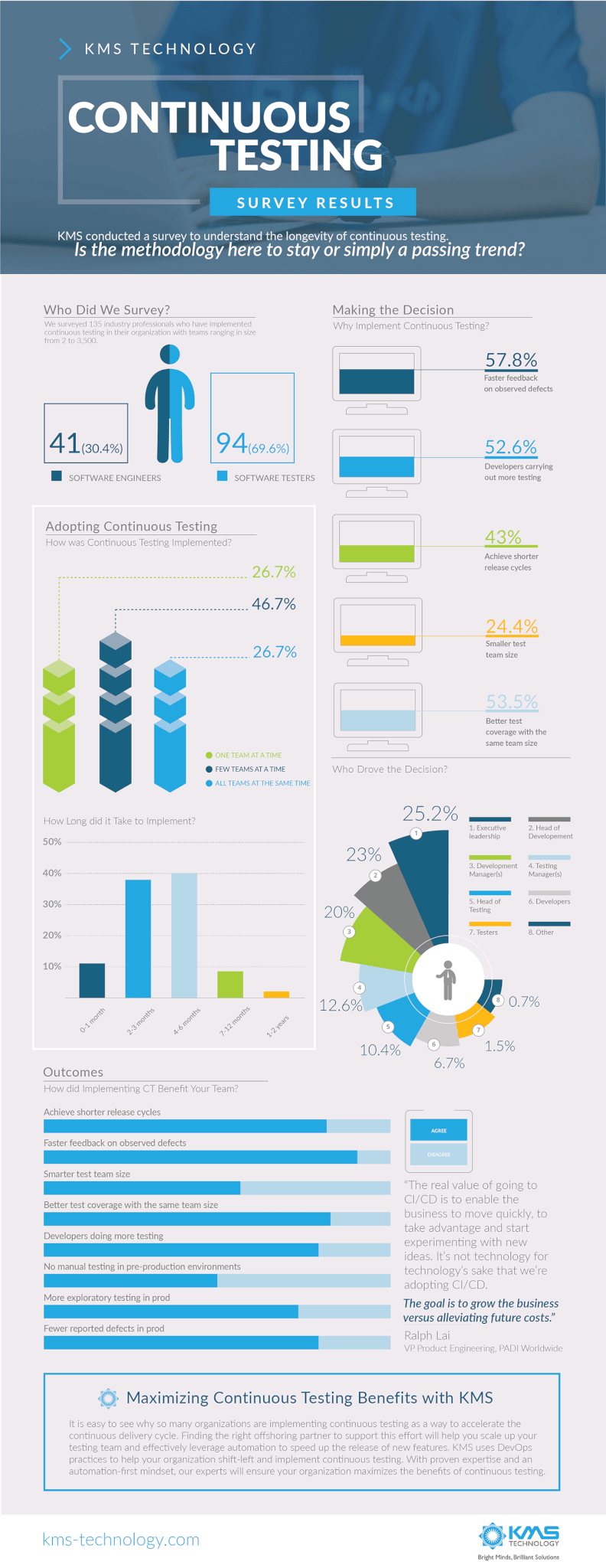[Infographic] Key Takeaways from Continuous Testing Survey
Understanding Trends in Continuous Testing
Is your organization considering implementing Continuous Testing as part of the Continuous Delivery Cycle? If so, it’s a smart move.
How do we know? Well, we recently explored the topic in our eBook, 3,2,1…Liftoff! How Continuous Testing Launches Continuous Delivery Into Orbit.
To better understand industry trends, we surveyed 135 industry professionals whose organizations have adopted the practice. We asked them about the implementation process, organizational goals, achieved outcomes, and challenges they faced.
We then took those findings to 5 industry leaders to get their perspective on how the industry is changing.
While we don’t want to spoil the eBook for you (seriously, it’s a great read!) we did want to highlight some of what we uncovered.
Curious about how you can use test automation to speed up your delivery cycles? Check out our software testing services.
Looking for a partner to optimize your software testing and speed up your delivery cycles?







